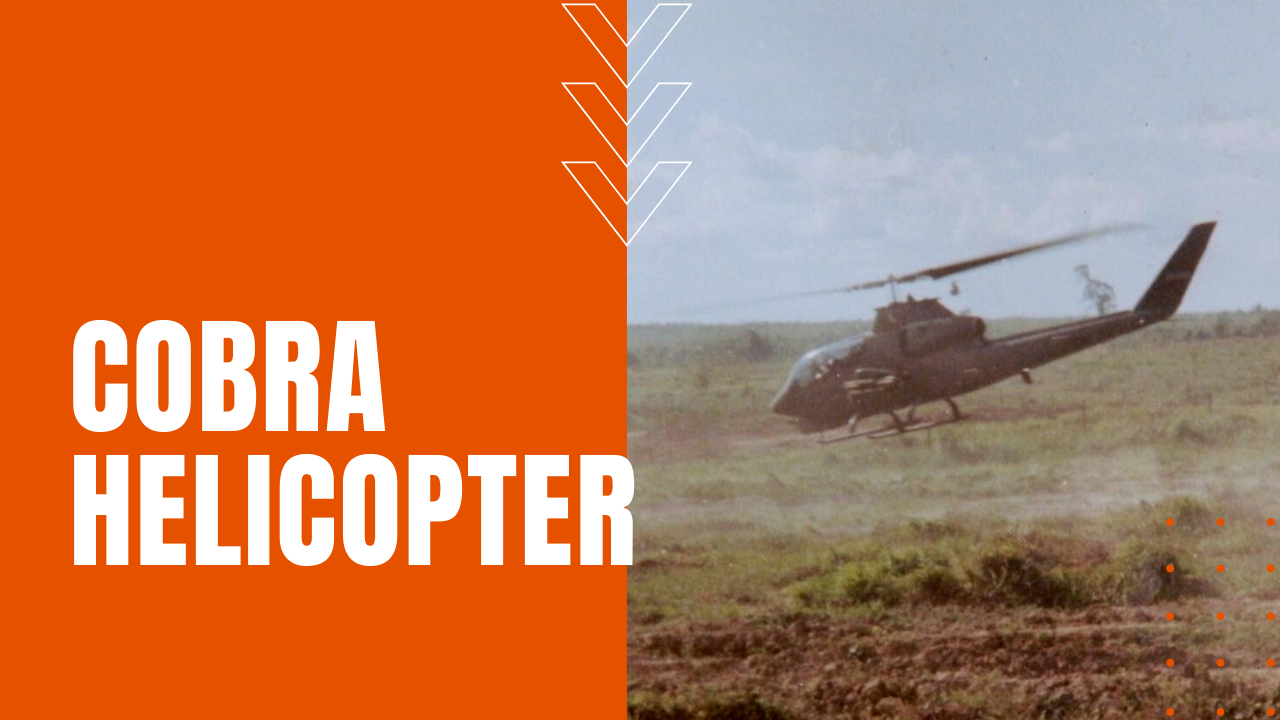Cobra Helicopter’s Role in the Vietnam War

Early experience in Vietnam persuaded the U.S. Army that the Bell UH-1 transport Huey needed an air escort, prompting Bell Helicopter to step in with the company-funded model 209 gunship development of the Huey.
The new helicopter retained the dynamic systems of the UH-1 Huey models, but married these to an exceptionally slim fuselage that seated just two crew members in tandem, with the weapon officer below and forward of the pilot for the best possible field of vision.
The Huey Cobra or Snake, as the Bell AH-1 became known, was rushed into production and service, and the helicopters were delivered into Southeast Asia on small transports for local assembly and rapid deployment to units stationed in South Vietnam.
Cobra Attack Helicopter
The Cobra also pioneered a new concept of armament, with a gun turret under the chin controlled by the weapon officer, and four hardpoints under the stubbed wings for gun pods and rocket launchers controlled by either crew member.
Both the weapon officer and the pilot possessed control capabilities of the aircraft, should one or the other become wounded during combat. The Cobra was designed to escort troop-carrying UH-1 Hueys, while using its superior airspeed to soften up landing zones prior to troop insertions.
The Cobra was also instrumental in supplying close ground support to pinned down American GIs in hot zones, where their lethal firepower could be called in by ground force commanders, delivering quick and highly accurate cover fire and enemy irradiation.
By using the established technology of the day, the Cobra was a simply-maintained attack helicopter, augmented by an easy-access engine hold, which allowed for routine maintenance procedures in the field. The Cobra’s increased airspeed, maneuverability and rate of climb combined with a greatly reduced aerodynamic drag associated with its larger Huey cousin, permitting Cobra pilots to arrive over targets in advance of larger slicks, while engaging the enemy for longer periods and with larger loads of ordinance.
After catastrophic anti-aircraft losses to American helicopters during the 1971 Lam Son offensive into Laos, Cobra pilots pivoted tactics to what became known as “Map Of The Earth” low altitude terrain-following, which significantly reduced their exposure to inbound enemy fire. Combined with the Cobra’s high airspeed and flight performance characteristics, Cobra pilots further developed a “Return To Target” maneuver, which became the helicopter’s equivalent to fixed-wing acrobatics, making the Huey Cobra one of the greatest air assets ever deployed during the Vietnam War.
